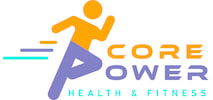STRETCH & REST CARE for the wellness warrior |
|
Do you stretch before or after you run? If not, is it because of time constraints or confusion over which stretches are best?
Since 53-90% of active runners get injured each year, it’s worth taking a moment to consider your running warm up and recovery routine. Running is a contact sport. It’s a series of controlled falls with rotation and the force generated on your knee and foot can be 3-12 times your body weight. Stretching with proper breathing prepares your nervous system for your next activity. If you’re going to run, you need to turn on your nervous system. If you’re going to relax, you need to calm it down. A boxer isn’t going to throw a punch in the ring without warming up on the mitts. If you run, you need to warm up your hips and prepare your legs for the contact. How you spend your day effects your play. Your connective tissue (“fascia”) takes the shape of what you do most. If you sit most of the day, your hips are going to be tight in the front (your hip flexors). Are you going from sitting in a chair most of the day to running? How long do you sit in the car before you run? What about after your typical run. Do you plop back into a chair or sofa as soon as you’re done? Tight hip flexors can cause your gluteal (buttock) muscles to not fire properly. The glutes give you power, speed and stability when running. If they aren’t working properly, the hamstrings have to work harder which can lead to hamstring injuries or cramping. Opening up the hips before you run will help turn on your gluteal muscles as well as improve your posture, speed and stride. If you run/jog typically on flat surface long distance (versus a sprinter), we recommend you target the hip flexors (front of hip) before and after you run. The runner’s lunge stretch will help activate, open up and reset your hips. In the video, Ender shows you how simple it is to modify it before and after you run. When stretching always:
Runner’s stretch sequence (shown in the video):
PRO TIP: Stretch with a 2 to 1 ratio- start and end stretching on your tight side to give those areas a little more attention and create more balance in your body. Stretching is one of the best ways to keep your tissue healthy and elastic - bungee cord like not rope like. REMEMBER: Breath and stretch faster before you run. Breath and stretch slower after you run. Always stretch with control and good form. Never force your tissue to release. Do you stretch before or after running? If so, leave a comment and let us know your favorite stretch. Happy Stretching! Mollie & Ender P.S. Want more recovery & stretch support? It's almost time for our next REST Camp: SHINE™! Get on the interest list here.
0 Comments
Leave a Reply. |
Mollie Miller, PT
|
TERMS OF USE PRIVACY POLICY
Core Power Health & Fitness, Inc. does not provide medical advice. Consult a licensed physician prior to beginning any exercise or nutrition program.
Copyright © 2015 Core Power Health & Fitness Inc.
Core Power Health & Fitness, Inc. does not provide medical advice. Consult a licensed physician prior to beginning any exercise or nutrition program.
Copyright © 2015 Core Power Health & Fitness Inc.


 RSS Feed
RSS Feed